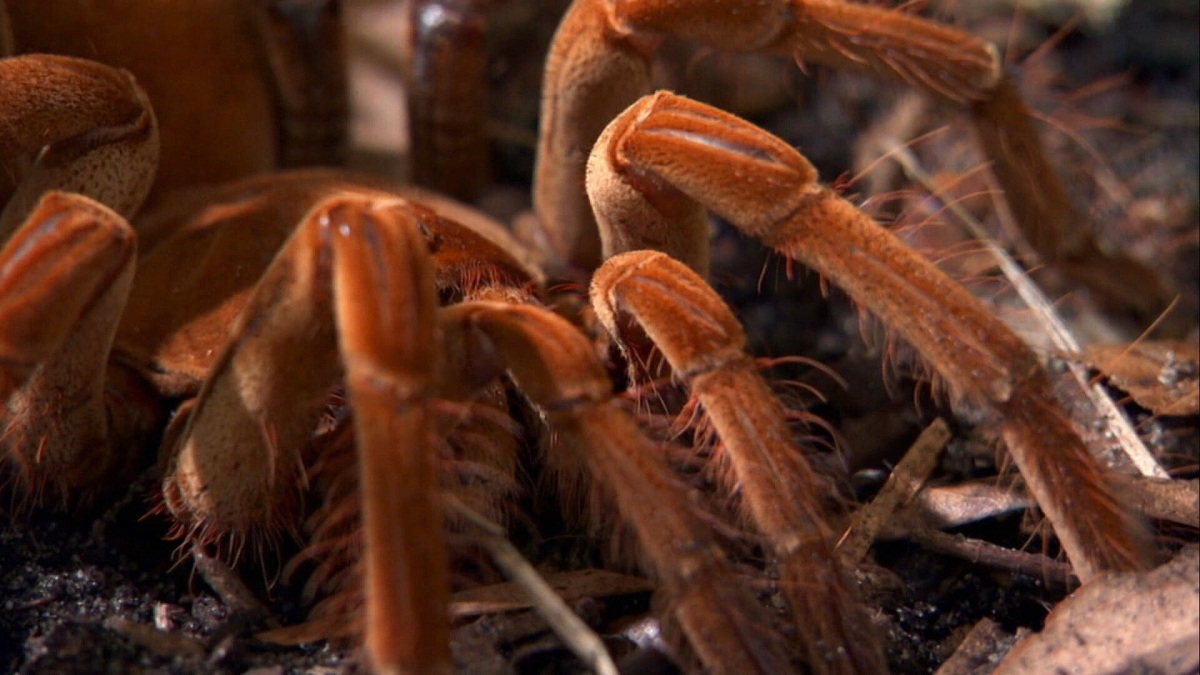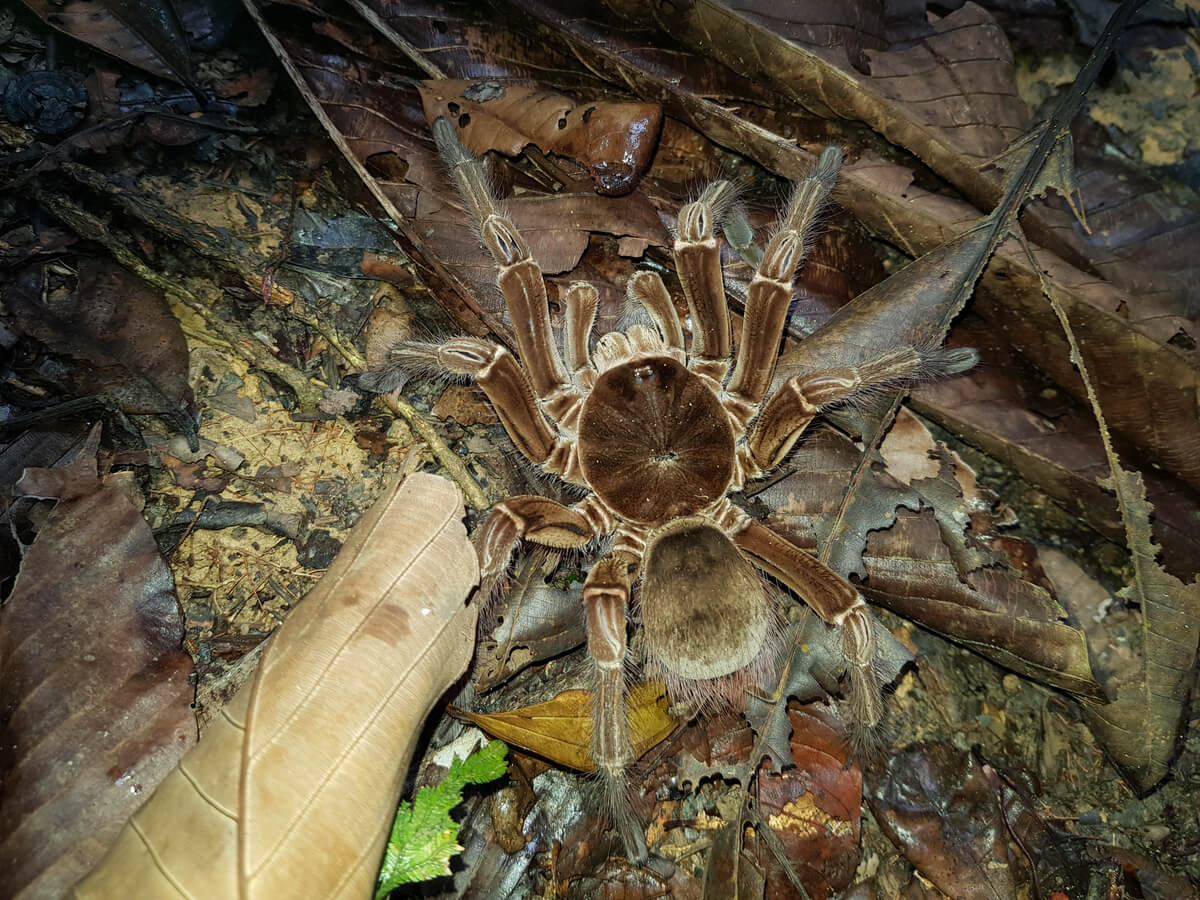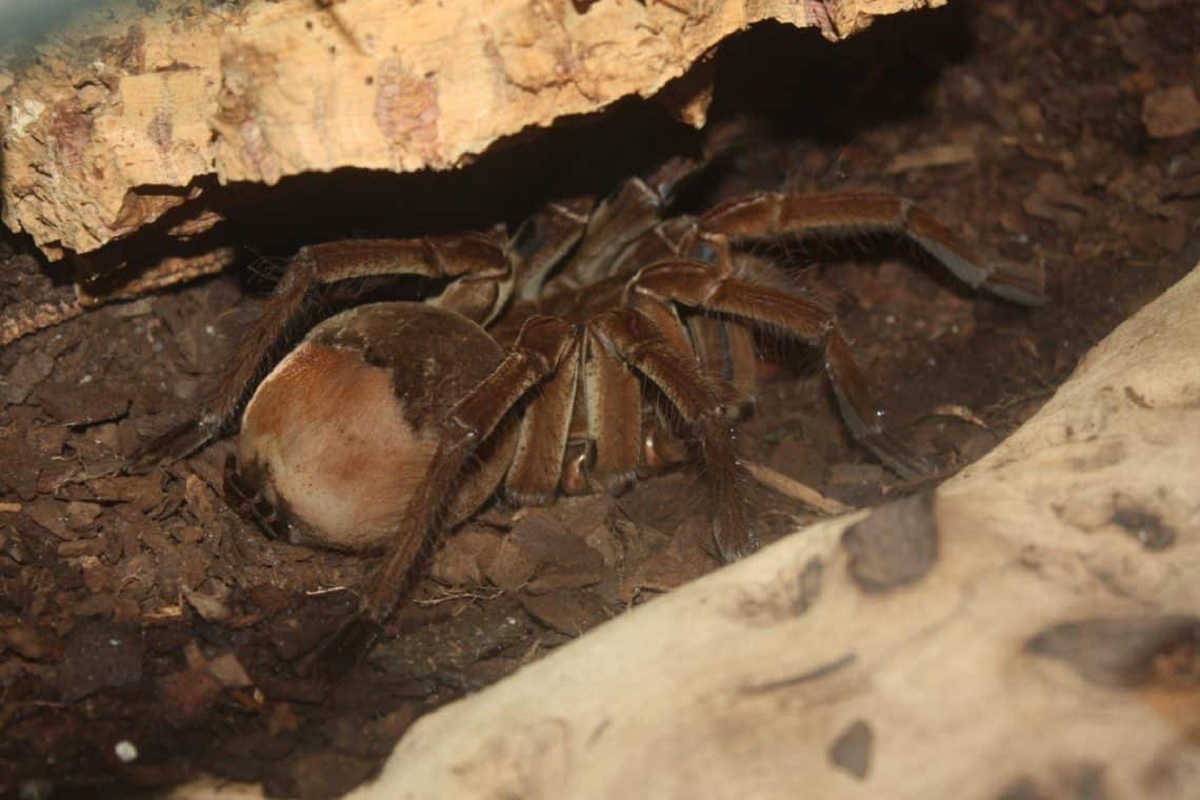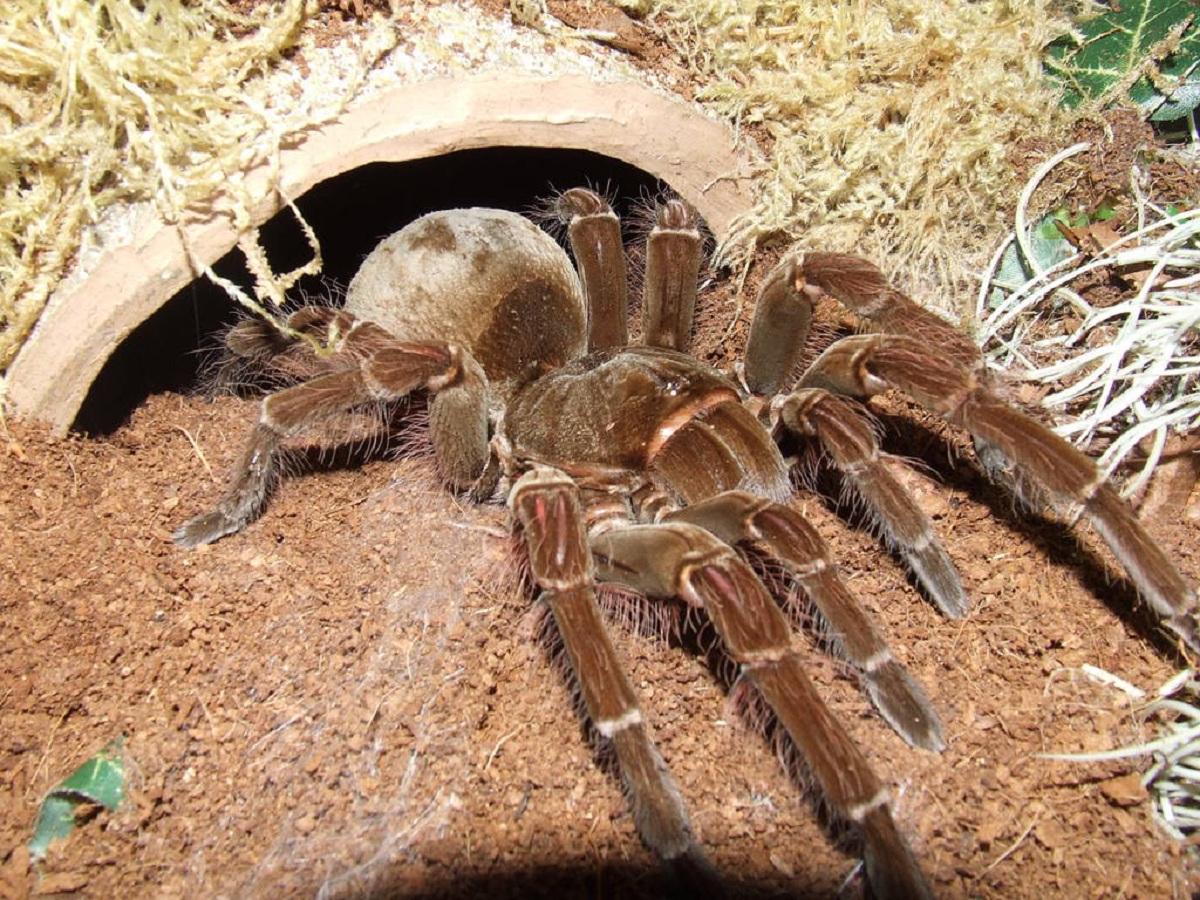
Spiders are one of the most horrifying animals for humans. There are many people who hate spiders and fear them on a large scale. Although they are usually small in size, there are quite large spiders. The world's largest spider It is known as a Goliath spider and has unique characteristics.
In this article we are going to tell you everything you need to know about the largest spider in the world, its characteristics and curiosities.
world's largest spider

The largest spider in the world in terms of weight and size is the giant tarantula, Theraphosa blondi. It can weigh up to 175 grams and stretch up to 30 cm long with straight legs. The females are bigger than the males.
As we pointed out, there are reported cases of up to 30 cm, but in fact, if we ask ourselves what is the height of the world's largest spider officially registered, we can say that the largest recorded specimen is listed in the Guinness Book of Records Book of Records World Cups. It is the spider of this species, discovered in Venezuela in 1965, and measures 28 cm long.
These are the main characteristics of the Goliath tarantula:
- It is characterized by having the body covered with hair and has a brown color.
- Her belly is thick, like her thighs.
- They are not very good climbersMost of them are terrestrial and live in caves. Here you can learn more about the animals that live in caves.
- They go fast and have a tense air. When uncomfortable, they hiss by rubbing their legs together, which can be heard from a distance.
- They can also stand on their hind legs to appear larger and adopt an alert posture for predators.
- In addition to its large size, it also has a lot of power.
- Its venom is not lethal to humans, It is similar to wasp venom but can cause fever, nausea, and dizziness. In small prey, the venom can immobilize them.
- Although they are also known as "bird eaters", they are rarely preyed upon. Instead, their diet is based on arthropods, insects, and worms. In some cases, it even feeds on small vertebrates, such as rodents, frogs, lizards or snakes, due to its large size and opportunistic feeding. First he captures them, then he drags them to his cave. It then releases digestive juices on its prey, breaking down the soft tissue to suck out the interior.
- His mouth is like a straw, so any food he eats must be in liquid form.
- On the other hand, the sting of their chelicerae is very painful. These chelicerae-like fangs are proportional to the size of this giant tarantula, which is 2,5 cm long.
- It also uses loose hairs as a defense method, which can cause irritation and itching when in contact with the skin, eyes and mouth. This tarantula has the most prickly fur of all tarantulas.
- Their eyes are not very good and can only perceive differences in shadows and light. To orient themselves, their sensitivity to ground vibrations helps identify threats or food.
- This spider is native to South America, especially Venezuela, Suriname, Guyana and Brazil. Their preferred habitats include moist places like swamps and jungles.
- They are nocturnal, solitary animals and do not usually move away from their burrows.
- Males live for only a year after breeding, while females can live 15-25 years.
- The females spend most of their time in their burrows, which are covered with silken webs.
Threat to the world's largest spider

The main threat facing the world's largest spider is its predators. They may predate wasps, other tarantulas, snakes, or humans, as in some areas Goliath tarantulas are prepared as culinary dishes.
Humans also have a habit of destroying everything that seems dangerous or unknown, and the Goliath tarantula is no exception, especially as the largest spider in the world. Therefore, we insist that if these spiders are not disturbed, they are not aggressive and must be treated with respect.
In addition, as an important fact, we highlight that their populations are stable and are not in danger of extinction, but it is important to maintain their ecosystems so that they can continue to exist.
The other largest spiders in the world

While the Goliath tarantula is the largest spider in the world, there are many more species of larger spiders, including:
- giant huntsman spider (Heteropoda maxima): This spider has the longest legs in the world. These can reach 30 cm with a body of 4,6 cm. They walk like crabs, live in caves, and their diet may even include cannibalism. They're poisonous
- Salmon pink tarantulas from Brazil (Lasiodora parahybana): They measure 28 cm long and weigh about 100 grams. The females are larger and stronger than the males, and the males have longer legs. It gets its name from the pink hair that contrasts with the black body. Their bites were painful, but they were only delivered as a last resort. They also release stinging hairs to ward off threats. They are exclusive to Brazil.
- King Baboon Spider (Pelinobius muticus): This tarantula has this special name because its legs resemble the fingers of a baboon. It is about 20 cm long and lives in Nigeria.
- huntsman spider (Cerbalus aravaensis): The legs are 14 cm long and the body length is 3 cm. It is the largest spider in the Middle East and lives in the sand dunes, where it camouflages itself with its sand-colored body. It is nocturnal and builds caves.
- Colombian giant tarantula: The Colombian giant tarantula or Colombian red-legged giant (Megaphobema robustum) feeds on mice, lizards, and large insects, so you may want to keep one for home pest control. However, they are known for their combative temperament. It's not a sting you need to worry about. A real (or imagined) threat will cause the spider to turn and attack with its spiky hind legs.
I hope that with this information you can learn more about the largest spider in the world and its characteristics.